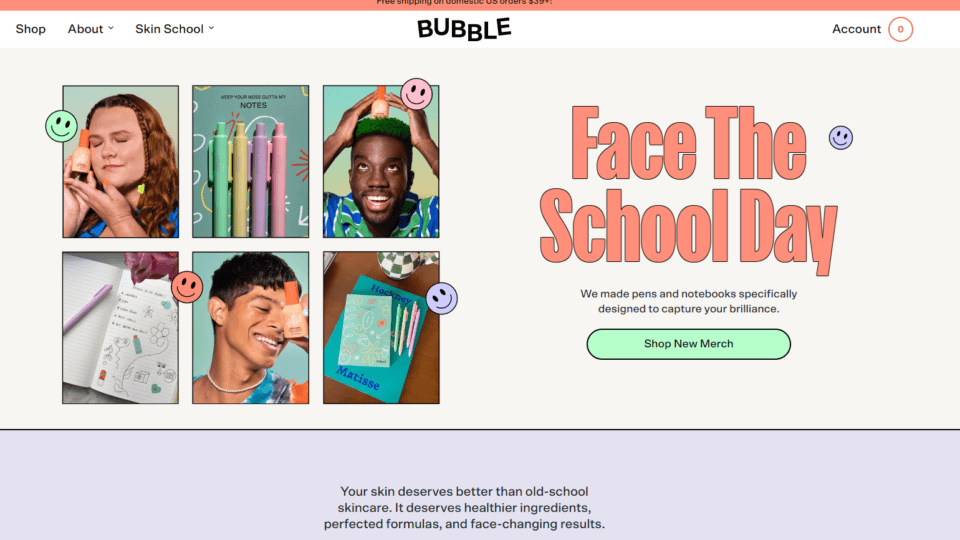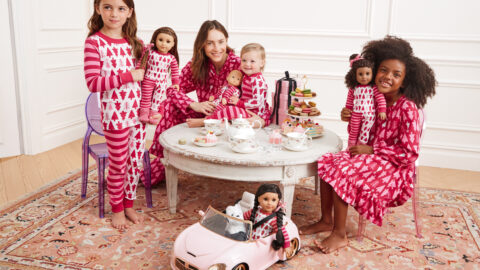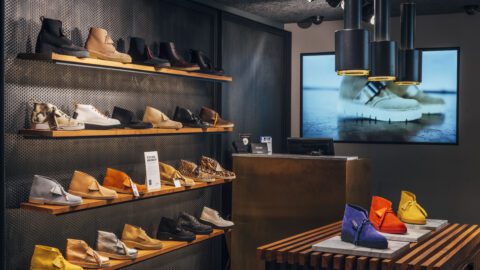It’s easy to understand why the skincare market exploded during the pandemic. Working from home and sheltered in place, consumers focused less on detailed makeup looks and more on reliable skincare routines that cleared blemishes and gave Zoom-captured faces a glow.
Soon after, a completely new breed of influencer arose with the emergence of “SkinTok,” a social media phenomenon in which consumers and influencers gravitated to TikTok for skincare tips and product advice. Consumers were hungry for information, and influencers were eager to educate the masses on skincare ingredients, new tools and brands to help complete their regimens.
Bubble is one brand that has been able to capitalize on these new behaviors and category growth by carving out a unique place in the global skincare market, which is projected to grow from $100.13 billion in 2021 to $145.82 billion in 2028. The fast-growing brand is doubling down on its connection to its Gen Z audience to create more tailored products and a more accessible brand experience.
“We were created for Gen Z,” said Shai Eisenman, Founder and CEO of Bubble. “The brand launched at the end of 2020 so it was very much born during the pandemic. It has been a process of building a relationship with Gen Z and our community.”
Bubble has put its community of 10,000 Gen Z consumers at the center of everything it does —from packaging to branding, customer experiences and even product expansion. Before a new product even goes to market, it is tested by a panel of at least 50 Gen Z consumers. The goal is to create a fun and accessible line of skincare products formulated with high-quality, dermatologist-backed ingredients that, essentially, will completely transform the teen skincare market.
“When you go into drugstores and mass- or big-box retailers, the aisle hasn’t changed in like 30 years,” Eisenman said in a conversation with Retail TouchPoints. “It’s been the same brands, the same formulations and the same experience. Even though there has been so much innovation in these areas, everything has pretty much stayed the same. Our goal is to bring the best-quality products, ingredients, formulations and experience into a world that never had it [be] accessible before.”
Bringing Accessibility and Authenticity Together
“Accessible” is the key word, and it is most applicable in Bubble’s approach to balancing price, value and availability. All products are tested by dermatologists, some of whom actually create the products, and they are formulated using “advantageous” and “clinical” ingredients (that are not controversial). The end products are effective and results-driven, and they still have a manageable price point for Gen Z consumers.
“You always had to pay four, five, even six times more money to get these kind of quality products,” Eisenman noted. “What we’re truly excited about is bringing that kind of quality product to stores that never had them available before, and also make these products accessible to customers that never were able to afford them before.”
This is how Bubble’s expansion strategy drives the brand’s mission. Although Bubble started as a direct-to-consumer ecommerce brand — it was born during the pandemic, after all — wholesale was always part of the bigger picture. In the early days of the brand, Eisenman and her team didn’t have access to wholesale retail contacts, but they knew that retailers like Walmart and CVS were key amplifiers of the Bubble brand. (As of this article’s publication date, Bubble products are in over 4,000 Walmart stores and 4,100 CVS stores.)
These high levels of brick-and-mortar distribution are vital to the company’s growth plans. “A customer who goes to Sephora or has Sephora accessible to them will spend significantly more on skincare,” Eisenman explained. Additionally, while there are 500+ Sephora locations nationwide, Walmart has 4,700 stores — a level of reach that was central to getting Bubble in front of as many Gen Zers as possible. “Walmart is available within a 30-minute drive for 90% of Americans, and about 50 million Americans go to Walmart every week.”
Digging deeper into Gen Z behaviors specifically, Eisenman shared:
- 80% of Gen Z consumers shop for skincare in-store and not online;
- More than 60% prefer to buy skincare products in big-box stores and drugstores; and
- 40% shop at Walmart three to four times a month, on average.
“We really wanted to bring something to a place where Bubble was truly going to be accessible to everyone, and some of our top-performing stores are in areas where they don’t have any other options available,” Eisenman said. “Customers looking for high-quality products and the best ingredients are everywhere, they’re aware of the ingredients because of social media. But when you look at what’s available to them, Walmart allows that level of accessibility that you can’t get with any other retailer.”
The Skincare-Mental Wellness Connection
In addition to accessibility, Bubble emphasizes transparency as well as mental health and wellness. The brand donates 1% of product sales to organizations that support mental health initiatives, and has a partnership with BetterHelp, so consumers get 50% off their first month of online therapy.
“I think in the teen years especially, we see a huge connection between skincare and mental health,” Eisenman noted. “I personally struggle with acne a lot and it influences your mental health in a significant way. It makes you not want to leave your house. However, we also want to make it clear that skincare is not self-care. While it’s an act of self-care, there’s so much more to it.”
(Skin) School is in Session
Social networks like TikTok have democratized skincare, giving consumers, influencers, dermatologists and experts an equal forum for sharing their knowledge and experiences. Eisenman sees the power of these platforms, and her team is using the Bubble site to create a similar destination for skincare education and other helpful resources — a section of the site appropriately and cleverly titled “Skin School.”
“I think Skin School is one of the best parts, and to an extent the ‘brain’ of our brand,’” Eisenman explained. Built by a team of dermatologists, product developers, chemists and clinical herbalists, Skin School was created for Bubble’s community of Gen Zers: “We wanted to give that community something to support them through the pandemic and help them learn more through the pandemic.”
Skin School has become a crucial resource for consumers who want to understand the nuances of skincare, dig into ingredient trends and speak with knowledgeable experts about their issues. Want to understand how veganism impacts skincare? Want to define and understand industry buzzwords? Or maybe you want to improve your current skincare routine? Skin School is for you. One helpful resource for skincare beginners is a quick quiz that allows visitors to share a little bit about their skin type. After walking through a three-part exercise, you can learn what your skin type is, which ingredients to look for and, perhaps most importantly, which ingredients to avoid.
Bubble initially created the Skin School concept for its 4,600 Gen Z community members about a year before the brand’s formal launch. They created two groups: one was focused on educating consumers about skincare ingredients and the second was an “ask me anything”-style forum where consumers could get answers from an expert to any skin-related question. Eisenman and her team listened, learned and found there was a real opportunity to expand the initiative.
“We started seeing so many weird questions and so many things that surprised us,” Eisenman said. “Questions like ‘Can I put toothpaste on my breakouts?’ ‘Can I use coconut oil on my face?’ All of these questions made us really understand that there’s a lack of education, and it’s been a surprise across the board about what they know and what they don’t know.”
In a world rife with social media trends and challenges, new buzzy ingredients and influencers peddling quick-fix products, Eisenman is dedicated to creating a platform for “true information.” She emphasized “true” because “the beauty industry is the industry with the most misinformation and fearmongering,” she said. “There are so many controversial ingredients, and some people don’t know why they are controversial, for example. We wanted to create a platform, supported by the research and science community, that was really going to be able to educate consumers about skincare, about ingredients and about how they can and should treat their skin. We want them to understand the story behind their skin.”















